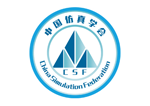Journal of System Simulation
Abstract
Abstract: 3D laser scanning technique has been widely used to acquire geometry information of artifacts. The broken relics can be virtually restored with the help of computer technologies. Aiming at solving the problems of the automatic virtual restoration for broken artifact fragments, a new method of semi-automatic reassembly was proposed. The motions of the user’s hands were simulated by using the data captured by Leap Motion. The movement of each fragment model was controlled interactively so that two fragments could be roughly matched. The matching results were fed back to the user in real-time, and the user could optimize the matching by controlling the positions of the fragments. The iterative closest point algorithm was adopted to realize the fine matching for rough matching result. The fine matching results were considered as a new piece, and the above steps were iteratively performed multiple fragments matching and reassembly. The experiments illustrate that the method can overcome the problem of the high dependency for automatic matching and neighbor fragments can be matched using the approach.
Recommended Citation
Lu, Haoran; Yu, Zhang; Niu, Miaomiao; Shui, Wuyang; and Zhou, Mingquan
(2020)
"Three-dimensional Virtual Reassembling for Broken Artifact Fragments Based on Leap Motion,"
Journal of System Simulation: Vol. 27:
Iss.
12, Article 18.
Available at:
https://dc-china-simulation.researchcommons.org/journal/vol27/iss12/18
First Page
3006
Revised Date
2014-06-24
DOI Link
https://doi.org/
Last Page
3011
CLC
TP391.7
Recommended Citation
Lu Haoran, Zhang Yu, Niu Miaomiao, Shui Wuyang, Zhou Mingquan. Three-dimensional Virtual Reassembling for Broken Artifact Fragments Based on Leap Motion[J]. Journal of System Simulation, 2015, 27(12): 3006-3011.
Included in
Artificial Intelligence and Robotics Commons, Computer Engineering Commons, Numerical Analysis and Scientific Computing Commons, Operations Research, Systems Engineering and Industrial Engineering Commons, Systems Science Commons

